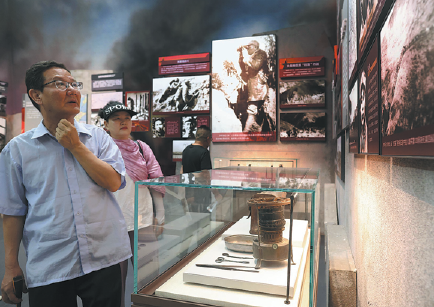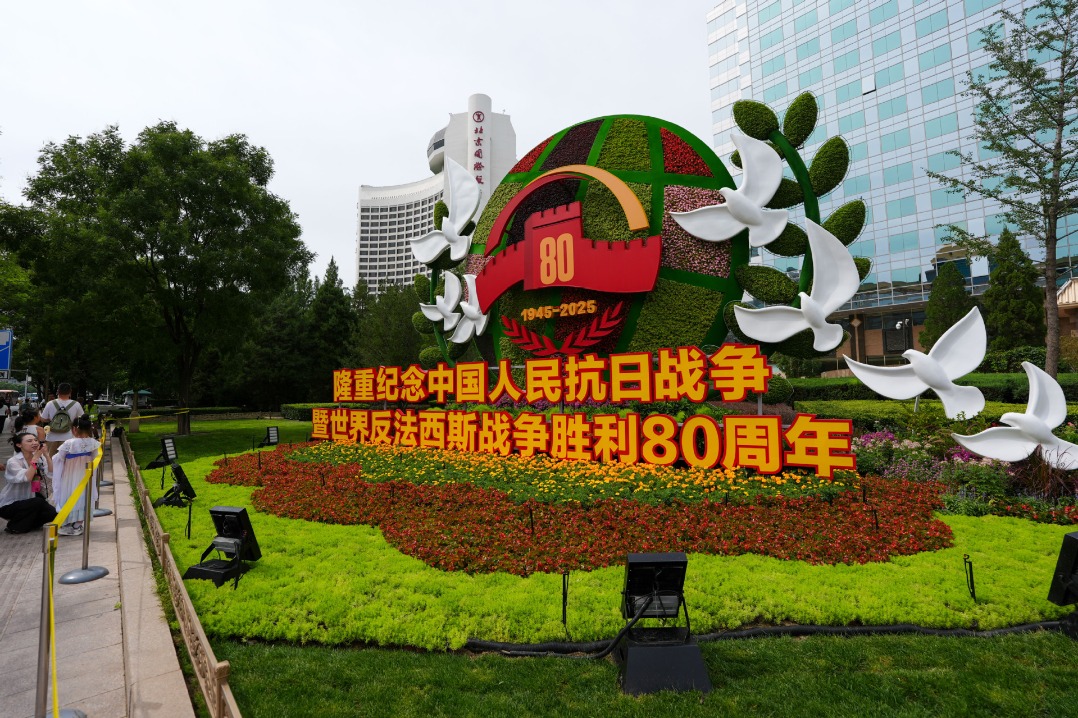Red heritage invigorates Yangquan
War memories ignite patriotic spirit, fueling confidence for new goals

Lei Jiankun, Party secretary of Yangquan in Shanxi province, pledged in a recent interview to protect and promote historical Red sites so people can remember and appreciate those who helped rescue China from Japanese invaders between 1931 and 1945.
The sites include locations tied to the Hundred Regiments Offensive of the Eighth Route Army. Launched on the night of Aug 20,1940, the campaign involved 105 regiments and lasted more than five months, ending in January 1941.
Over the course of 1,824 engagements, the offensive caused more than 20,000 Japanese casualties and was the largest and longest strategic offensive carried out in North China during the Chinese People's War of Resistance Against Japanese Aggression (1931-45).
"We must remember the history of the Chinese People's War of Resistance Against Japanese Aggression and inherit and promote the great spirit of the war," Lei said. "And we must bring confidence and strength to the task of creating new historical achievements on a new journey."
On July 7, President Xi Jinping, who is also general secretary of the Communist Party of China Central Committee, visited Yangquan, the main battlefield of the first phase of the Hundred Regiments Offensive. At a memorial hall honoring the soldiers, Xi presented a flower basket in tribute.
It was the first time a top leader of the CPC had ever visited Yangquan, Lei noted.
"He reflected concern and care for high-quality development and deep affection for the people in old revolutionary areas," she said. "The entire city was immersed in an atmosphere of excitement and great encouragement."
She added that the offensive "not only disrupted enemy operations, but also galvanized national morale during the war".
Located at the central point of the Zhengding-Taiyuan Railway, Yangquan was an important site early on in the offensive. During the first phase, the Eighth Route Army fought 181 battles in the Taihang Mountains, with 12 major engagements occurring in Yangquan, including a particularly fierce one at Shinao Mountain.
Yangquan, named for its clear springs, was established in 1947.As the first city founded by the Communist Party of China, it provided a model for the Party's shift from rural to urban areas.
On May 4, Yangquan marked its 78th anniversary.
"Being the first people's city was no accidental or isolated event but a deliberate choice," Lei said. "As Shanxi's eastern gateway, Yangquan's transportation advantages, along with its coal and iron resources, laid a solid foundation for its establishment despite its being relatively unknown."
This year marks the 80th anniversary of victory in the Chinese People's War of Resistance Against Japanese Aggression and the World Anti-Fascist War. Since the beginning of summer, visits to the Hundred Regiments Offensive Memorial Hall have increased more than fivefold year-on-year.
The city is upgrading exhibitions, expanding its virtual reality hall, accelerating the construction of the Shinao Mountain Digital Museum, and improving support facilities and services to create a nationally renowned base for patriotic education.
"The courage to fight and the fearlessness and sacrifice demonstrated by the Party and the Eighth Route Army were the fundamental keys to victory," Lei said. "We must now bravely forge ahead and face challenges with the spirit of advancement despite difficulties, cultivating and maintaining a tenacious fighting spirit."
Since opening three decades ago, the memorial hall has welcomed more than 10 million visitors. In 2024, it received more than 400,000.
One of the newly added artifacts on display is an oil lamp once used by General Fan Zixia, donated by his descendants. Fan fulfilled his vow to defend the nation with his life in Yangquan, and his deeds were included in the first list of heroes and groups fighting the Japanese invaders published by the Ministry of Civil Affairs in 2014.
"The Chinese people paid a heavy price of 35 million casualties to defeat the Japanese invaders," Lei said. "So we need to remember history and cherish peace. We must tell the stories of the war and pass down its great spirit from generation to generation. Additionally, we must strengthen local research, sort archives and documents, and produce high-quality results."
Yangquan has 138 historical Red sites, including 74 related to important Party history and institutions and 12 tied to commemorative sites of personal activities.
"In the next step, we will strengthen the protection of Red sites and complete the application work for national-level memorial facilities, famous heroes and heroic groups related to the war," Lei said.
"We will also vigorously promote the great spirit of the war, strive to make new strides in transforming and developing the resource-based economy, and endeavor to write a new chapter in advancing Chinese-style modernization in Yangquan," she said.


Today's Top News
- Industrial upgrade pivots on digital tech
- Media center begins operations, welcomes journalists
- World leaders to attend V-Day events
- Commemorating victory against aggression upholds peace, justice: China Daily editorial
- Military drills against regional consensus: China Daily editorial
- China, India should jointly maintain peace in border areas, Defense Ministry says






























